I’ve reported on significant field curvature with the Fujifilm 20-35mm f/4 GF lens. The purpose of this post is to see how that field curvature affects landscape images in landscape orientation. In this post, I’ll report on how the lens did at 35 mm focal length. In the previous posts, I looked at the performance at 20mm and 28mm.
I started with a tree 100 meters away in the center of the image.
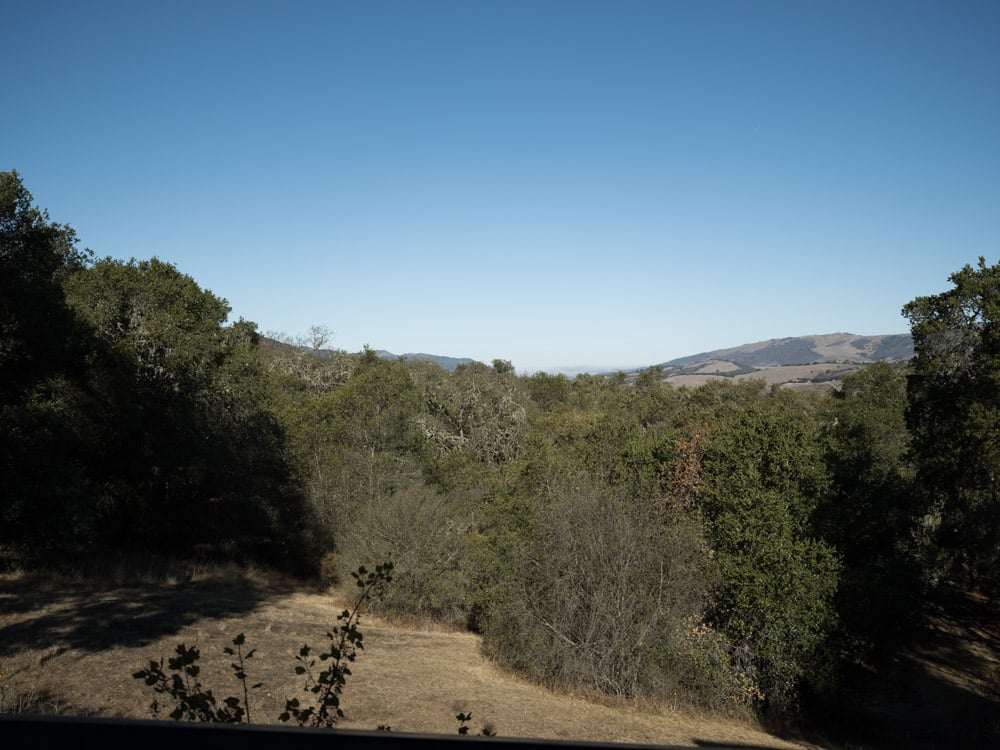
I panned the camera so that the tree fell on the right side near the edge. I made pictures focusing in the center, and refocusing when the tree was at the edge, and also without refocusing from the point where the tree was sharpest in the center. I made two sets of images, and picked the sharpest ones. The Fuji manual focusing at high magnification with peaking is good enough that both sets of images were about the same sharpness.
I used the side instead of the corner a) because it was easier, and b0 because I thought it was more realistic for landscape photography, where the subject distance at the corners of the image is usually not the same as to the center.
Details:
- GFX 100S
- 20-35 GF
- 2-second self timer
- ISO 100
- Manual focus
- Low red peaking
- Maximum magnification
- RRS legs, C1 head
- Developed in Lr CC with defaults except for
- Adobe Standard Profile
- Sharpening amount 20, radius 1, detail 25
- Daylight color balance
Here are some crops at about 250% magnification.

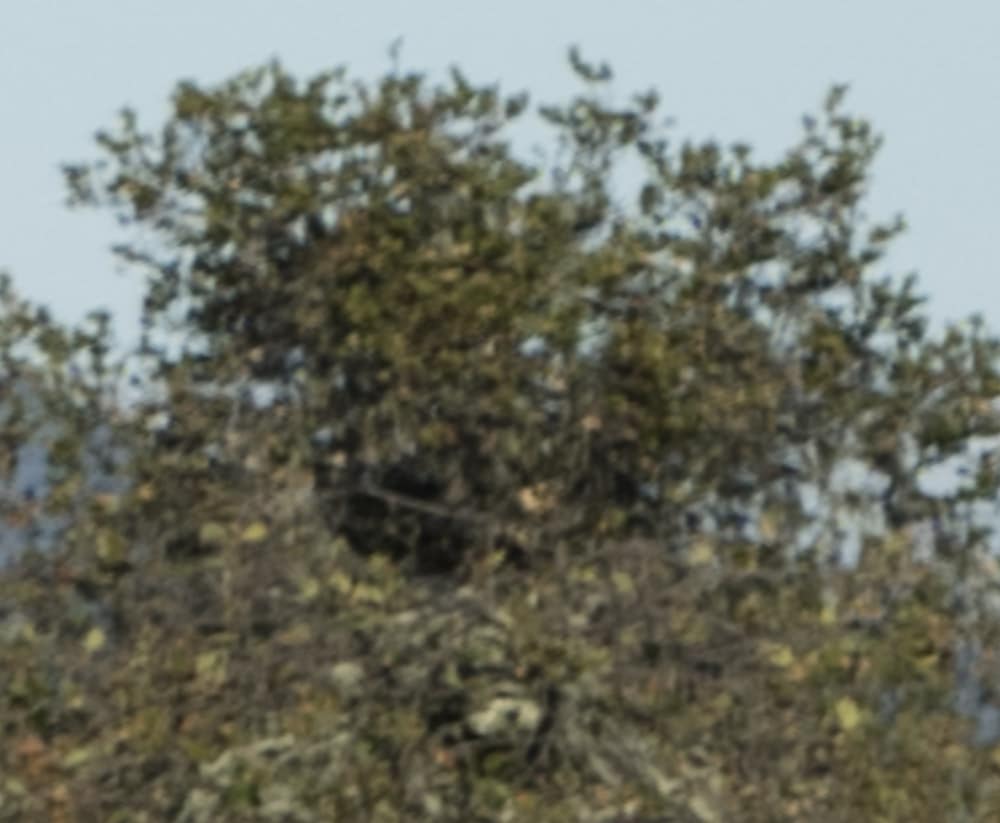
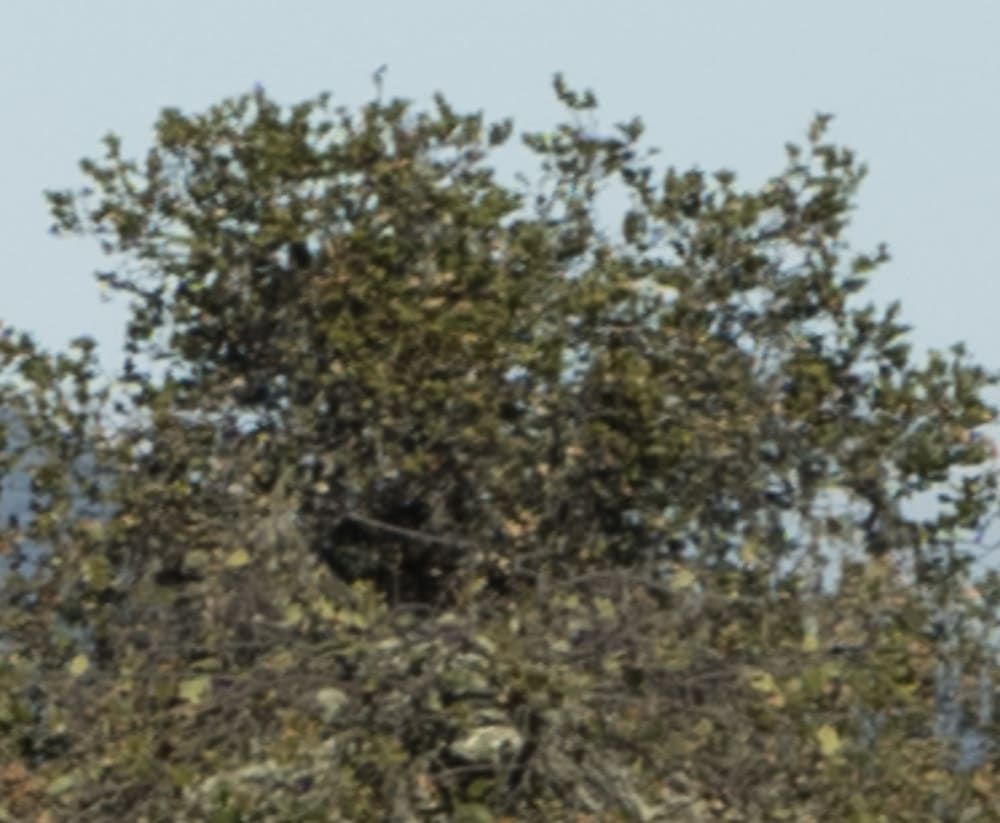
The lack of field flatness is hurting the lens a lot at f/4.

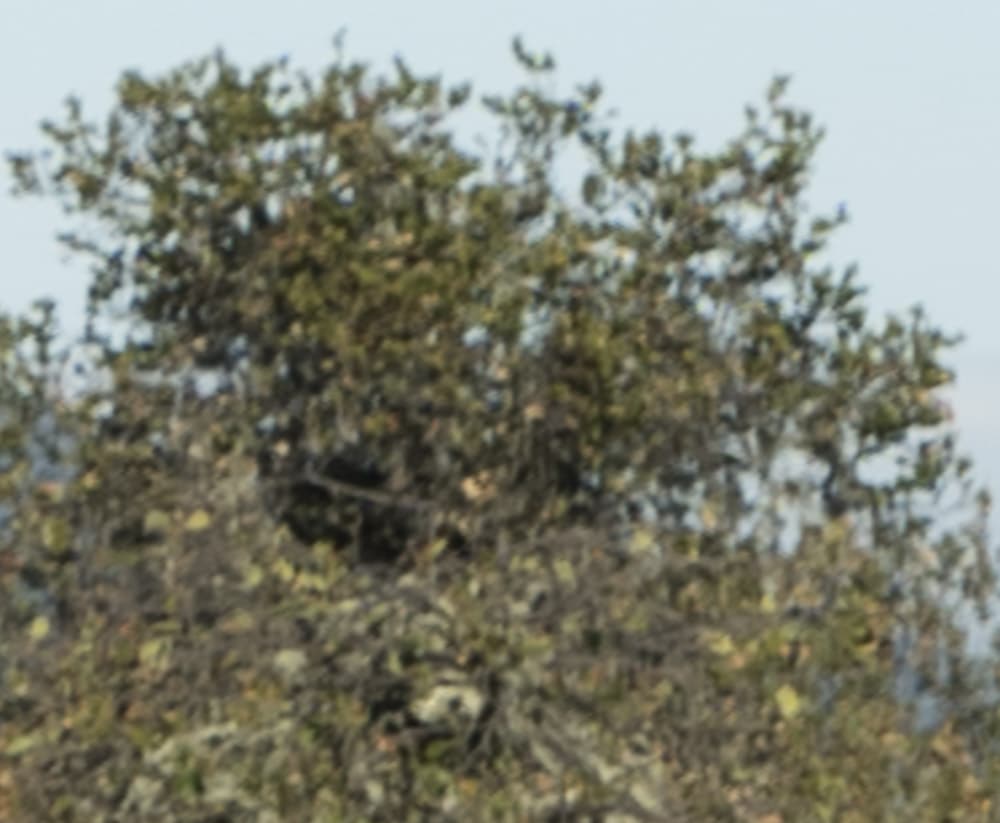

Same here, at least with respect to field flatness.

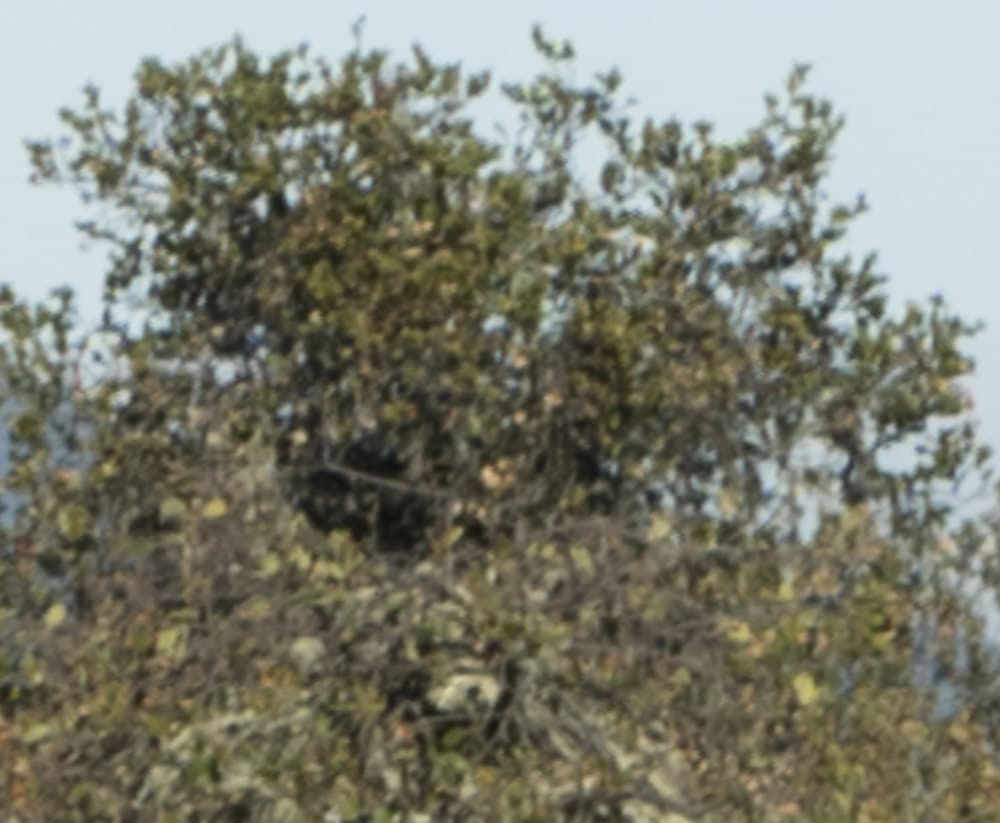
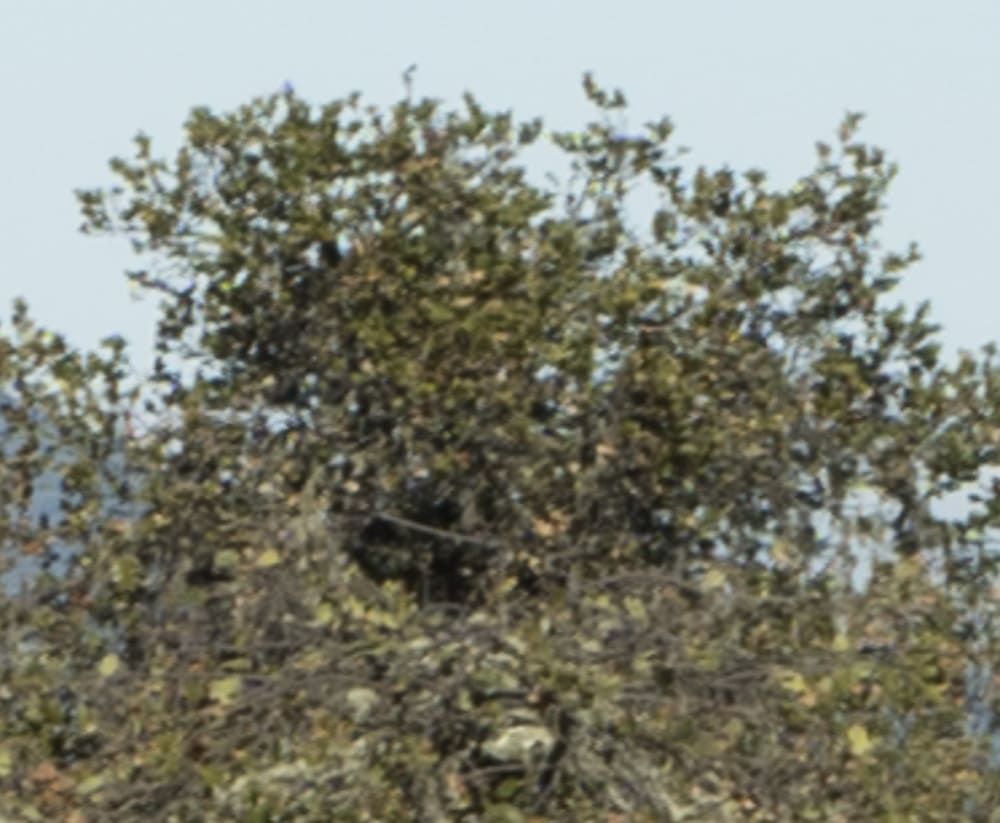
At 35mm, the field flatness is so bad that even f/8 can’t save the shot.



At f/11 the DOF gets rid of most al the effects of the field curvature, but there’s a lot of diffraction blur.
Brian olson says
Panning would favor a cylindrical field wouldn’t it? A flat field should be further from the camera at the edges right?
JimK says
I hadn’t thought of that, but as long as there’s lots of overlap you should be fine. The sides will be discarded, so curvature will matter less. I can’t see why it would be an advantage though, assuming your subject is approximately planar.
Brian Olson says
Yeah, I just meant I would expect the tree to be out of focus after panning if the field was perfectly flat. The test of focusing on the tree and then panning until the tree is at the edge *should* put the tree out of focus if the field is nice and flat. It would leave the tree in focus if the field was cylindrical. I didn’t mean to suggest a cylindrical field would be desirable, just that this panning test shouldn’t leave the tree in focus after panning. Love your site btw!
JimK says
If the 20-35 had a flat field the tree would be in focus both at the center and at the edge.
https://blog.kasson.com/lens-screening-testing/theory-of-the-test/
Brian Olson says
I should have known it was accounted for. I overestimated the amount of difference between the circle and the plane at your distance to the tree. As always you have thought through everything thoroughly! Have to say I really enjoy the photos you post on Facebook as well. I’m impressed that you have an artistic side to go with the deep technical knowledge.
Samuel Chia says
Hi Jim,
Your lens’ field of focus appears swung as evidenced from your Roger-Cicala-style field curvature samples, focusing closer on the right edge vs the left. I can also see a loss of focus in your Siemens star chart tests for this lens due to this focus swing. It also appears that the focus field is tilted from the siemens charts, but without additional camera-vertically-orientated field curvature tests, I cannot say for certain.
By putting the tree on the right edge here, the difference between refocusing vs center focus would be more than had you placed the tree on the left edge. The effect you show is worse than a straighted copy of this lens, assuming this amount of curvature is representative of this design.
So one wonders what would the loss of focus look like from the curvature if the lens was not swung or tilted. And also, if it were possible to get a copy that wasn’t as curved. I’ve noticed that curvature can vary quite a lot between copies, regardless of who makes the lens.
Sam
JimK says
“I’ve noticed that curvature can vary quite a lot between copies, regardless of who makes the lens.”
The few times I’ve been able to test field curvature on pairs of lenses that passed my screening test, the filed curvature has been the same.
Colin says
Followup to Sam’s comment: I wonder how much lens-to-lens variation there is across a large sample size . . . .
Mine shipped today, I may actually have to setup a test to see what it looks like. My plan is to have a two-body, two lens kit of the 20-35 and 45-100.
Samuel Chia says
Hi Colin,
It all depends on how fussy you are, and if your subject matter will reveal such flaws. To the obsessed, there will be more variation than you dare to expect (and have paid dearly for). To the casual photographer, the lenses are of extraordinary quality and consistency thanks to modern manufacturing.
Joseph Holmes wrote up a massive article where he tested many copies of the GF 32-64 and 45-100, field curvature was seen to vary much more than we would like, among other issues. I personally found a 32-64 that had virtually no curvature (which is unusual for this design) but it was badly decentered. Zeiss has admitted to Lloyd Chambers that their then-revered Otus lenses (made by Cosina) will vary “modestly” with regards to field curvature. Brandon Dube (when at Lensrentals) measured more than a modest amount of MTF variation of the 55mm when compared to similar lenses of even lower pricing from other brands. I personally have been screwed by curvature of over 50 microns off standard from a Voigtlander 35mm F2 APO-Lanthar for E-mount (also made by Cosina).
My chosen subject matter demands a precision of under 10 microns of skew, whether it be due to field curvature, or lens crookedness or camera sensor mounting skew. That is 1/10th the thickness of regular office paper and about half of the thickness of the thinnest kitchen aluminium foil.
If you think this is too demanding, bear in mind that Fujifilm, by their own admission on their own website, claims they manufacture to within a few microns (read: under 10) in tolerance, in consideration of the depth of focus when using a lens at f/2. That’s the best/clearest public confirmation I’ve seen so far from any camera manufacturer about their commitment to precision, and is very very good! https://fujifilm-x.com/global/stories/gfx-technologies-2/